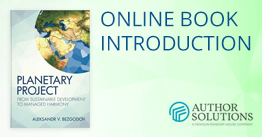Major future challenges
02/12/2016
Future holds many challenges. They can divided into several groups: political, economic, technological, and socio-cultural.
POLITICAL CHALLENGES
(1) The period between 2010 and 2030, the emergence and growing influence of new power centers in world politics; a growing role of hard power in international relations; and the escalation of some regional conflicts. These phenomena are caused by the accumulation of contradictions both between leading nations and between post-industrial (developed) and industrial (developing) economies. A possible consequence of these challenges is expected to include a variety of forms of fighting for spheres of interest ranging from local armed conflicts to terrorism to information and economic wars.
(2) Internal instability and socio-political conflicts within some nation-states stemming from crises affecting political parties and trade unions and the absence of any other political forces to replace them. Effects could include a paralysis of a country’s governing system, including the inability to form a government or frequent changes of government.
(3) The emergence of a new series of international problems including the clash of countries at the cognitive and industrial stages of their development. A transition to a new development model may force this clash: after 2030, when absolutely new forms of political activity are shaped by situation communities rather than mass organizations. As a consequence, the main thrust of internal policy will be to tackle contradictions between the cognitive and industrial stages of development.
(4) In 2030 – 2050, depending on its outcome, a crisis will lead to partial disintegration of the world into individual regions and the emergence of new authoritarian regimes (as a reaction to the disruption of social fabric) in some countries and to internal political chaos in others. On the other hand, a relative political stability (with the exception of some countries) will be achieved at the cost of lower development rates. As a result, by 2030 the industrial development crisis will have brought to the fore the conflict between developed (post-industrial) and developing (industrial) countries. After 2030, a relative stability between larger countries will be maintained at expense of restrictions on free movement of people, information, ideas, capitals and goods, as well as due to local conflicts.
ECONOMIC CHALLENGES
(1) In the 2030s, we should expect a crisis caused by the exhaustion of potential markets. Improved standard of living in developing countries (with slowing population growth) will saturate major market niches in infrastructure and manufacturing basic goods. Therefore, once industrialization is complete in developing countries the world’s industrial development will experience increasing limitation. These crisis trends will overlap and become aggravated. Currently, the world has approached both industrial phase growth and long-term hyperbolic growth (throughout the history of humanity) limits.
(2) On the other hand, developing countries’ GDP growth is restrained by two factors. They are: Firstly, extremely low performance and low growth rates among poor countries (with the population of up to 1,5 billion people). Secondly, an expected slowdown of growth rate in successful developing economy upon the completion rapid industrialization phase (China, India, and South East Asia). Once a certain GDP level (15–20 thousand dollars) is achieved the economy will undergo a transition from industrial to post-industrial development, with a corresponding drop in growth rate.
TECHNOLOGICAL CHALLENGES
(1) The scientific-technological sphere is likely to demonstrate lower efficiency for the following reasons:
- The survival of outdated management of science, technology and education;
- The status of science as service industry stemming from the dominance of grants as the chief form of funding;
- An increased share of administrative activity at the expense of the share of cognitive activity in science;
- A crisis of basic research at the backdrop of the increased importance of applied research.
Here are some of the possible effects of this phenomenon:
- Hyperspecialization leading to a gap between scientific disciplines;
- A crises of scientific rationality and a scientific worldview;
- An educational crisis causing the costs go up accompanied by longer study;
- Hunger for human resources in many areas with increased numbers of leading specialists imported by developed countries.
(2) 2030 and subsequent years will see increased administrative regulation of research and research results implementation and, as a result, R&D lesser efficiency and simplified forms of research management. The reason: strict regulation of technological development. This regulation will curb technological development in environmentally and socially sensitive areas and stimulate artificial market developments. By 2030, for the above reasons the potential of main development areas within this scenario will have been exhausted while the industrial complexity limit will not have overcome. It means that advances in biotechnology, nanotechnology, information and physical technology will not be integrated into new technological packages, which will limit the scope of their use.
SOCIO-CULTURAL CHALLENGES
(1) Following 2030, the spread of technologies in developing countries and stagnation in developed countries will lead to developed countries losing their technological and scientific dominance. This may happen because of the absence of any significant technological breakthrough by 2030 that could be compared to the explosion of electronics and informatics in 1970 – 2000. As a result, the status of science may fall. This could be expressed in the blurring of the line between science and false science, the decrease in the share of natural sciences in education, the diminishing prestige of working in academia and the wide spread of superstitions and myths.
(2) By 2030, there will have been an inevitable dramatic growth of information wars and conflicts. It will be caused by increasing political pressure on information technologies on security grounds, and the tightening up of cultural and value restrictions in the information sphere during the period of 2030 – 2050. Cited effects include a crisis with, and the gradual dissolution of, the existing regulation system due to accumulated contradictions while information and governance challenges and risks will become a major development factor.
The crisis forecast for 2030 will be caused by a conflict between old and new forms of organizing scientific work and social effects of new technologies. Following the principle of constructive destruction, the crisis will give an extra boost to the development of science and encourage new ways of organizing research. In 2030 – 2050, the rapid development of information (social, psychological and managerial) and physical technologies, the emergence of new research and technological areas, as well as new forms of organizing research will make for a number of breakthrough technological solutions. This will be accompanied by the integration of the technological sphere with social, cultural and psychological practices, all of which will increase the impact of these practices on society.
Source: Mirovaya energetika - 2050. Belaya kniga (World Energy 2050: The White Paper). International Sustainable Energy Development Centre under the auspices of UNESCO, 2011. Bushuev, V.V., and Kalmykov V.A. (Eds). Moscow: Energia Publishing House, 2011.









